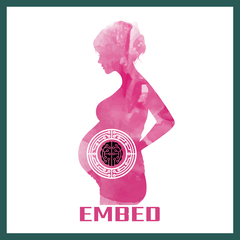The liver is a major site for synthesis, storage and redistribution of carbohydrates, proteins and lipids. In addition, it is well-known that maternal obesity (MO) increases risk of offspring cardiovascular disease (CVD), diabetes and obesity. However, the mechanisms by which the MO intrauterine environment predisposes offspring to CVD and metabolic dysregulation are unknown. The goal of this study was to assess the impact of MO on primate fetal liver and identify underlying molecular mechanisms by which MO increases disease risk. The goal of this study was to identify candidate molecular mechanisms underlying MO in the near-term non-human primate (NHP) fetal liver. This is the first study of NHP fetal MO livers using unbiased transcriptome analysis to quantify hepatic gene expression, identify dysregulated signaling pathways and potential miRNAs regulating the disrupted metabolic processes. Unbiased gene (arrays) and microRNA (miRNA; small RNA-Seq) abundances were quantified in near-term (0.9 Gestation (0.9G)) baboon fetal livers (control (CON) = 6; MO = 5) and subjected to pathway and network analyses (GeneSifter, Ingenuity® Pathway Analysis (IPA)) to identify a coordinated molecular response to MO. Lipid and glycogen content (CON = 16; MO = 16) were quantified by Computer Assisted Stereology Toolbox (CAST) in 0.9G livers. Pairwise comparisons showed 933 differentially expressed genes between CON and MO livers: 350 genes were upregulated and 583 were downregulated. Pathway analysis revealed upregulation of Wnt/β-catenin signaling and downregulation of tricarboxylic acid (TCA) cycle, proteasome, oxidative phosphorylation and glycolysis pathways in MO fetal livers compared with CON. Inversely expressed miRNAs that target genes in these pathways provide additional support for the importance of these pathways in fetal liver metabolic regulation. Consistent with the observed pathway changes in MO, we found hepatic lipid content was threefold greater in MO than CON fetal livers (p=0.02). Molecular genetic analyses of CON and MO fetal baboon livers revealed dysregulation of Wnt/β-catenin signaling, TCA cycle, proteasome, oxidative phosphorylation and glycolysis pathways in MO livers, all of which are central to fatty acid metabolism and lipid storage. The marked lipid accumulation in MO fetal livers supports our hypothesis that dysregulation of these pathways detrimentally impacts lipid management. Furthermore, our findings demonstrate the detrimental impact of MO on fetal liver development and suggest impaired hepatic function prior to birth.
Unbiased gene (arrays) and microRNA (miRNA; small RNA-Seq) abundances were quantified in near-term (0.9 Gestation (0.9G)) baboon fetal livers (control (CON) = 6; MO = 5) and subjected to pathway and network analyses (GeneSifter, Ingenuity® Pathway Analysis (IPA)) to identify a coordinated molecular response to MO.
